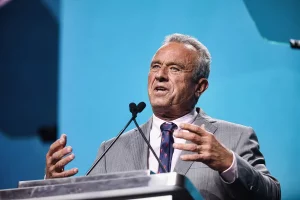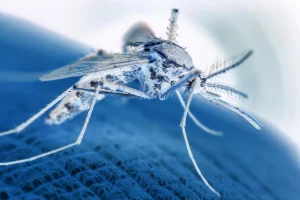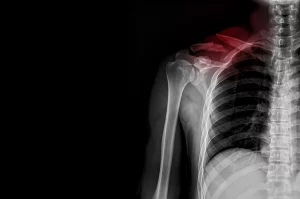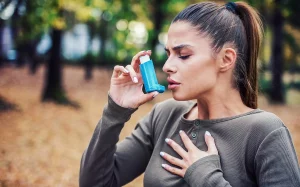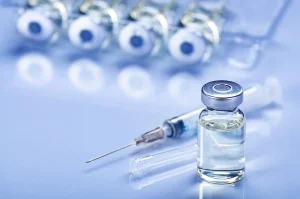As national guidelines on social distancing during the coronavirus pandemic expired Thursday, the White House announced an initiative to produce a COVID-19 vaccine that could be available nationwide by January.
President Donald Trump said it is not too optimistic to try to produce roughly 300 million doses of vaccine in eight months, enough for all Americans, the Washington Post reported.
“No, I’m not overpromising. I don’t know who said it, but whatever the maximum is, whatever you can humanly do, we’re going to have. And we hope we’re going to come up with a good vaccine,” the president said during a coronavirus task force briefing Thursday.
Even the shorter timeline still means there would be no full protection from the coronavirus until after most Americans are likely to have returned to work or school.
Dubbed “Operation Warp Speed,” the goal is to produce hundreds of millions of doses by January, Anthony Fauci, the nation’s top infectious diseases expert, said Thursday.
“We want to go quickly, but we want to make sure it’s safe and it’s effective,” he said on the “Today” show. “I think that is doable if things fall in the right place.”
That’s likely welcome news to the millions of businesses that have had to shut down or curtail operations during six weeks of stay-at-home orders, with 3.8 million Americans added to the nation’s jobless rolls on Thursday. That brings the six-week total to more than 30 million newly unemployed, The New York Times reported.
As the U.S. coronavirus case count climbed past 1 million and the death toll topped 63,000, Trump signed an executive order this week that forces beleaguered meat processing plants to stay open so the country’s food supply isn’t threatened.
The order used the Defense Production Act to classify meat processing as critical infrastructure, to try to keep chicken, pork and other meat flowing to supermarket coolers, the Associated Press reported.
More than 20 meatpacking plants have been shuttered under pressure from local authorities and their own workers because of the virus. Others have slowed production as workers have fallen ill or stayed home to avoid getting sick, the wire service said.
Emphasis on testing
Earlier this week, Trump announced a “blueprint” for boosting testing capacity nationwide.
The national guidance says states must develop their own testing plans and rapid-response programs while the White House provides “strategic direction and technical assistance,” and helps “align laboratory testing supplies and capacity with existing and anticipated laboratory needs,” the Post reported.
Admiral Brett Giroir, the assistant secretary for health, told CBS News that the Trump administration is prepared to send all 50 states enough tests to screen 2% of their population per month for the virus, roughly 6.6 million people.
By Sunday, the United States had conducted about 5.5 million tests, according to the Covid Tracking Project, which compiles those figures from individual states. But that number is only equivalent to about 1.7 % of the U.S. population, the Post reported.
In contrast, Germany increased testing earlier than the United States did and had tested 2.5% of its population by April 21, the newspaper reported.
Social distancing orders remain a patchwork across the United States. Governors in hard-hit New York and Michigan are keeping stay-at-home orders in place until at least mid-May, while their counterparts in Georgia, Oklahoma and Alaska have already allowed certain businesses to reopen, the AP reported.
Still, even as states start to reopen for business, a new study suggests that many of the tests needed to prove that workers might be immune to the new coronavirus are faulty.
Researchers at the University of California, Berkeley, and UC San Francisco tested 14 of the leading blood antibody tests. These tests look for antibodies proving that a person has already encountered the novel coronavirus and might have some immunity to COVID-19, the Times reported. Such immunity would be crucial in allowing a person to safely return to the workplace.
But the research team found that only three of the 14 tests delivered consistently reliable results, and even those three were not perfect. Just one test was accurate enough that it never delivered a false-positive result (in which a person is identified as having antibodies for the new coronavirus when in fact he or she did not).
Outcomes were worse when it came to false-negative test results, the Times reported. False-negative findings mean that a person is falsely found to have not been exposed to the coronavirus, when in fact he or she has been exposed. Among the best three tests out of the 14 reviewed, testing correctly spotted antibodies in infected people only 90% of the time, the report found.
Economic help
In the meantime, economic hardship from the coronavirus-linked lockdown continues. The U.S. House passed a $484 billion deal last week that would replenish a small business loan program that has run out of funding. The bill also directs more money to hospitals and COVID-19 testing.
Despite the pain that battling the new coronavirus has exacted on the economy of the United States, an AP poll found Americans remain overwhelmingly in favor of stay-at-home orders and other efforts to slow the spread of the coronavirus.
The survey, released by the Associated Press-NORC Center for Public Affairs Research, also finds a majority of Americans say it won’t be safe to lift those measures anytime soon.
Even so, governors across America are crafting plans to start to ease social distancing in the coming weeks. By Friday, at least 35 states will have relaxed their lockdowns, CBS News reported.
Those plans are afoot even though new estimates from Harvard University researchers suggest that the United States as a whole cannot safely reopen until health officials triple the number of coronavirus tests now being conducted, the Times reported.
New York remains the epicenter of the coronavirus outbreak in the United States, though deaths and hospitalizations continued to decline, CBS News reported. The Navy hospital ship Comfort left New York City’s harbor after treating 182 patients during its 30-day mission.
On Thursday, after heavy criticism of the homeless fleeing to the subways, Gov. Andrew Cuomo shut down overnight service to conduct a thorough cleaning, CBS News reported.
“It makes sense if you don’t want the infection rate to go up in your society,” Cuomo said.
In preparation for a possible reopening in the coming weeks, Cuomo has announced the state will implement the “most aggressive” antibody testing program in the country, CBS News reported.
He has also issued an executive order stating all New Yorkers must have a mask or mouth and nose covering when they are not maintaining social distancing in public, CBS News reported.
Cases spread in U.S. and globally
According to a Times tally, the top five states in coronavirus cases as of Friday morning are: New York with nearly 310,000 cases; New Jersey with more than 118,000; Massachusetts with more than 62,000; Illinois with nearly 53,000 and California with more than 50,000.
Gov. Gavin Newson announced Thursday the re-closure of beaches in Orange County, Crowds had formed on those beaches last weekend, stoking renewed fears of viral transmission.
“My job as governor is to keep you safe,” Newsom said. “And when our health folks tell me they can’t promise that if we promote another weekend like we had, then I have to make this adjustment.”
On a hopeful note, Chinese health officials said this week that Wuhan, the original epicenter of the pandemic in China, has no coronavirus patients in its hospitals.
South Korea and Hong Kong also appear to have curbed coronavirus for now: On Thursday, South Korea reported that for the first time since the virus’s Feb. 29 peak, there were no new domestic cases and only four travel-related ones. The story was similar in Hong Kong, which on Thursday reported no new cases for five straight days, the Times reported. The city had a resurgence in infections in late March that prompted strict lockdowns on travel, social distancing measures and the widespread adoption of work-from-home policies, the newspaper said.
Elsewhere in the world, the situation remains challenging. After publishing new numbers that now include deaths outside of hospitals, the U.K. posted the third-highest coronavirus death toll in the world, at more than 26,000, the AP reported. That country has now surpassed Spain and France for COVID-19 deaths in Europe, with only Italy still ahead, the wire service said. The United States still has the world’s highest death toll, at more than 63,000.
Spain reported 24,543 deaths by Friday, despite signs the infection rate is slowing there, the Johns Hopkins University tally showed. Deaths in Italy also remain high at nearly 28,000, although numbers have leveled off there as well. Both countries are cautiously reopening their economies.
Meanwhile, signs emerged that the virus has been all but vanquished in New Zealand and Australia.
Brazil looks like it could become the next hotspot in the coronavirus pandemic, however. By Friday, the South American country had reported more than 6,000 deaths and over 87,000 confirmed infections, according to a Johns Hopkins tally. But the true numbers are believed to be vastly higher.
Russia was also struggling to contain the spread of coronavirus, as the case count in that country surpassed 114,000 on Friday, the Hopkins tally showed. Moscow remains the most virus-stricken part of the country, but there are growing concerns that infections could surge in more remote regions with weaker health systems, the Post reported.
Worldwide, the number of reported infections neared 3.3 million on Friday, with nearly 234,000 deaths, according to the Hopkins tally.
More information
The U.S. Centers for Disease Control and Prevention has more on the new coronavirus.
Source: HealthDay
Copyright © 2025 HealthDay. All rights reserved.











